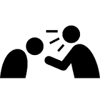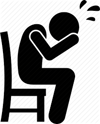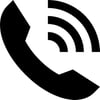
Betrayal of Trust: Identifying Elder Abuse
After completing this module you will:
Understand the concepts of elder abuse and how to identify suspected abuse of your Clients.
Know the appropriate steps to take if you suspect abuse of your Clients.
Understand the steps to take to protect yourself from being accused of abuse.
Instructions:
- This is a self-study lesson that you can complete at your own pace. Take your time and think about the information.
- Feel free to make notes.
- Once you have completed all (4) required modules, you will take an online test about the information covered in each lesson.
- After completing the (4) required lessons, and passing the test, you will receive two (10) education credits.
Introduction:
It is estimated that between one and two million older Americans are abused in some manner each year. The incidence of elder abuse is increasing and is a problem everywhere.
The abuse of the elderly has many faces. Abuse can be passive which means:
- It is unintentional and not a result of a specific action on the part of a person.
- This is the most common form of elder abuse.
- It is usually the result of relatives or friends who do not realize the time, effort, money and experience required to care for an aging person.
- The Caregiver relative may be elderly and in poor health, he or she may lack the skills to care for the other person or he or she may not understand the care the person requires.
- Passive abuse is frequently caused by a close relative who lives some distance away or simply does not care or wish to be bothered.
Abuse can be active which means:
- A specific and purposeful act by a person. This can be the decision to withhold support or needed care.
- Reasons that lead to passive abuse also contribute to active abuse, but the difference is it a purposeful decision on the part of the Caregiver to abuse the older adult.
- Active abuse most commonly occurs when the elderly person is isolated and alone there is less chance that witnesses will be around to report the abuse.
- It can either be recent or a pattern that has existed for years and worsens as the victim ages and becomes more dependent on the Caregiver.

Abuse can take many forms:
Physical Abuse: inflicting physical injury or pain by such acts as pushing, slapping, pulling, hitting, choking, denying medical care, etc. It increases over time.
Emotional Abuse: inflicting emotional or mental anxiety by such acts as name calling, treating the person as a child, using insulting language, behaving in a threatening or intimidating manner, etc. µ Financial Abuse: illegal or unethical use of money or property, restricting access to money, disposing of possessions without permission, etc.
Neglect: the intentional or unintentional failure or inability to fulfill care- taking responsibilities such as providing food, a safe home environment, providing for personal care needs, etc.
Multiple Abuses: some older adults are the victims of one or more of the types of abuse listed above. Physical abuse usually does not stand alone. If there is physical abuse, emotional and financial abuse are usually present.
Spousal Abuse: physical and/or emotional abuse that most often has occurred throughout the marriage but may start later in life due to emotional problems related to aging.
Self-Abuse: actions by a person directed at himself or herself that are negligent and potentially life threatening. The person may or may not be competent.
Often the abuse victim denies the abuse, feels helpless and resigned to the continuation of the abuse. The victim may refuse to sign police complaints for fear of being totally abandoned by the abuser.
Who are the abusers?
The abuser is often the primary caregiver who may or may not be related to the victim. It is the person the victim is most dependent on. But there are others:
- Neighbors, landlords, merchants, etc. who misuse or misappropriate the elderly person’s financial resources.
- A paid Caregiver who provides specific services.
No person should be reluctant to report suspected elder abuse to the proper authorities. Every state has elder abuse reporting laws protecting the person reporting the suspected abuse from civil or criminal liability. As a paid Caregiver the proper authority is your Supervisor and it is your responsibility to report suspected abuse to your Supervisor.
Signs of Abuse in the Elderly

Physical Signs:
- Cuts, bruises, abrasions, bites or welts that have no reasonable explanation.
- Several wounds in various stages of healing.
- Bruises that look like the object used such as a belt, stick or finger tips.
- Multiple burns that have a definite form such as a cigarette tip, iron, etc.
- Bed sores.
- Malnutrition and dehydration. Always hungry.
- Dirty, unkempt appearance and odor. Few or inappropriate clothes or shoes.
- Overgrown nails. Broken or decaying teeth. No dentures.
Behavioral Signs:
- Refuses needed medical, emergency or dental treatment.
- Depression, threatens self-harm or suicide.
- Extreme anger or hostility.
- Withdrawn. Refuses to talk to family, friends or others.
- Exhibits inappropriate behavior such as using obscenities, assaults others, writes abusive letters or threatening phone calls.
- Acts anxious and confused.
- Has vague health complaints.
- Begs for food.
- Picks at sores or scratches self causing sores and bleeding.
- Anxious to please.
- Changes doctors frequently.
- Vague about how injuries occurred
Household Signs:
- House shows lack of repairs and normal maintenance.
- Signs of incontinence of bladder and bowels.
- Lack of food, spoiled or rotten food and/or garbage in home.
- Evidence of rats or mice.
- Home is cold and/or damp.
- Utilities shut off.
- Messy, cluttered, dusty rooms.
- Home smells.
- Neglected Pets.
- Lack of household appliances or appliances not working.
Examples: When Does Elder Abuse Occur?
When the older adult has been:
- Hit by another’s hand or fist or by an object.
- Scratched on purpose or had hair pulled unnecessarily.
- Threatened with physical injury, abandonment or death.
- Shoved.
- Assaulted sexually.
- Forced to remain in a confined area such as a room, closet, bed or other area.
- Pulled or tripped or had an arm or leg twisted.
- Given unnecessary medication or medication that controls behavior (chemical restraints).
- Yelled or shouted at inappropriately.
When the older adult has been neglected by denying him or her:
- Nutritious food and water in adequate amounts.
- Needed medical treatment or medication. Lack of glasses or hearing aides.
- Safe and clean living conditions.
- A clean body and clothes.
- A caring environment that shows concern, respect and privacy.
When the older adult has been taken advantaged of by:
- Being institutionalized (such as being placed in a nursing home) unnecessarily by his or her family or other responsible person.
- Selling property or possessions against his or her will.
- Theft of money, income or possessions by others.
- Been threatened into participating in an activity against his or her will.
Your Responsibilities When You Suspect Client Abuse

No words can emphasize enough the seriousness of suspected abuse of a Client. The abuse, neglect or exploitation of an elderly person can result in severe punishment to anyone who abuses an elderly person- no matter who the abuser may be.
- Not all abuse is criminal. Most cases of passive abuse are not because it results from a lack of information or needed knowledge. It is not a conscious act by another.
- Physical abuse of an older person is no different than committing assault and battery.
- People who physically abuse others are subject to arrest, trial and a felony conviction on several different charges. If the abused person should die as a direct or indirect result of the abuse, murder or manslaughter charges could result.
- People who financially abuse an older adult are also subject to arrest and conviction.
- Anyone who fails to report suspected abuse is as guilty as the abuser and, in some states, is subject to arrest.
You have a legal, moral and ethical responsibility to report suspected abuse or neglect of your Client to your Supervisor. If you don’t report the abuse, who will? You must have specific information and have any supporting documentation available.
Your first responsibility is to respond to any life-threatening emergency situation. You need to call 911, and then administer CPR (if you are certified) or administer first aid as needed. After the Paramedics have arrived, you need to notify your Supervisor immediately. If your Client is in no immediate danger, you should call your Supervisor and discuss your concerns and observations.
Your Supervisor will follow-up on your concerns according to the policies and procedures established by the company.
Under no circumstances should you discuss your concerns with your Client or his or her family. Discussion with others could put you, your Supervisor, your employer and others at risk and or cause unnecessary embarrassment if no abuse has occurred.
Caring for a Client Who Has Been Abused

- Any person who has been abused or neglected is frightened, suspicious and depressed. His or her feelings are understandable. Someone they love and trusted have betrayed them.
- The person may feel ashamed of his or her dependency on others, feel despair and may wish to die.
- As a Caregiver in this situation, it is very important that you are accepting of your Client’s feelings. Watch your facial expressions and other body language.
- Do not be judgmental toward your Client or the abuser. Most abuse by a family member occurs due to stress or mental illness of the abuser.
- You need to provide an environment where your Client feels safe, secure and free of any abuse. You may need to constantly reassure your Client.
- All Caregivers need to be patient with Clients, but caring for an abused Client requires special sensitivity and patience. Your Client may be fearful of being abandoned.
- Be particularly observant of signs or symptoms of continuing abuse or neglect. Report any concerns to your Supervisor immediately.
- You must be careful in what you say. You must use your best communication skills. The less you talk, the more your Client will talk to you.
- Do not talk to your Client about the abusers.
REMEMBER: You are your Client’s advocate! As an advocate you must: µ Keep in mind that unless designated by the courts, your Client is competent to make his or her own decisions concerning care, services and medical treatment. This includes the right to refuse treatment or any interventions by others.
- Allow the person to talk and express feelings and fears.
- Do not confront your Client.
- Document what your Client tells you for your Supervisor.
- Focus on your Client’s strengths and abilities.
How to Prevent the Suspicion of Being an Abuser
Nothing could be worse than being accused of abusing your Client! While it does not happen often, any accusation is taken seriously and thoroughly investigated. You will be removed from the case and you may be suspended while the investigation takes place.
Any substantiated charge will result in the following actions:
- You will be terminated immediately.
- All appropriate law enforcement agencies will be notified.
- You will be reported to the state certifying agency.
Are we trying to frighten you? No. We feel you should know any consequences of verified abuse of your Client. We also understand that some Client’s are confused and may suffer from dementia. These Clients are more prone to make false accusations. We are there to support you if you are falsely accused and to protect your Client from harm.
There are things that you can do to protect yourself from being falsely accused of abuse.
- Always handle your Client gently and carefully.
- Document, document, and document! All bruises, cuts, skin tears including location, date happened, size, appearance and how it happened should be documented in writing.
- Never force your Client to do anything against his or her will. There is a difference between encouragement and forcing.
- Do not ignore your Client’s complaints even if you feel they are unfounded.
- Listen to your Client. If safely possible, do it his or her way.
- Report any accusations your Client may make or concerns made by your Client’s family to your Supervisor immediately.
If you are experiencing conflicts with your Client, report them to your Supervisor. Discuss the situation and your feelings. Being a Caregiver can be very stressful.
- Look at your own behavior and how it might be contributing to the conflicts.
- Are you frequently angry with your Client?
- Might your Client do better with a different Caregiver?
- Are you stressed by other things going on in your life?
- Are you bringing your problems to work with you?
- Are you taking good care of yourself? Eating right. Getting enough sleep? Taking needed time away from Caregiving?
- Never accept money, gifts or personal items from your Client. When shopping for your Client, always provide the change and an itemized receipt.
- Never allow anyone, except a family member, to remove any object, furniture or any possession of your Client from the home without notifying your Supervisor.
- Never sign or witness any legal document for your Client.
- If a situation makes you uncomfortable, notify your Supervisor immediately.
- If you are accused of any kind of abuse, do not become defensive. Have your facts and documentation in order. That is your best defense.
Conclusion:
- Elder abuse is a growing problem in this country and the incidence of abuse will continue to rise.
- As a health care worker, you have special responsibilities in reporting suspected abuse of Clients.
- Remember, you are your Client’s advocate. Take that role seriously.
You have completed the Betrayal of Trust: Identifying Elder Abuse module!
Please complete the remaining required modules before taking the online test.